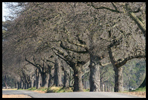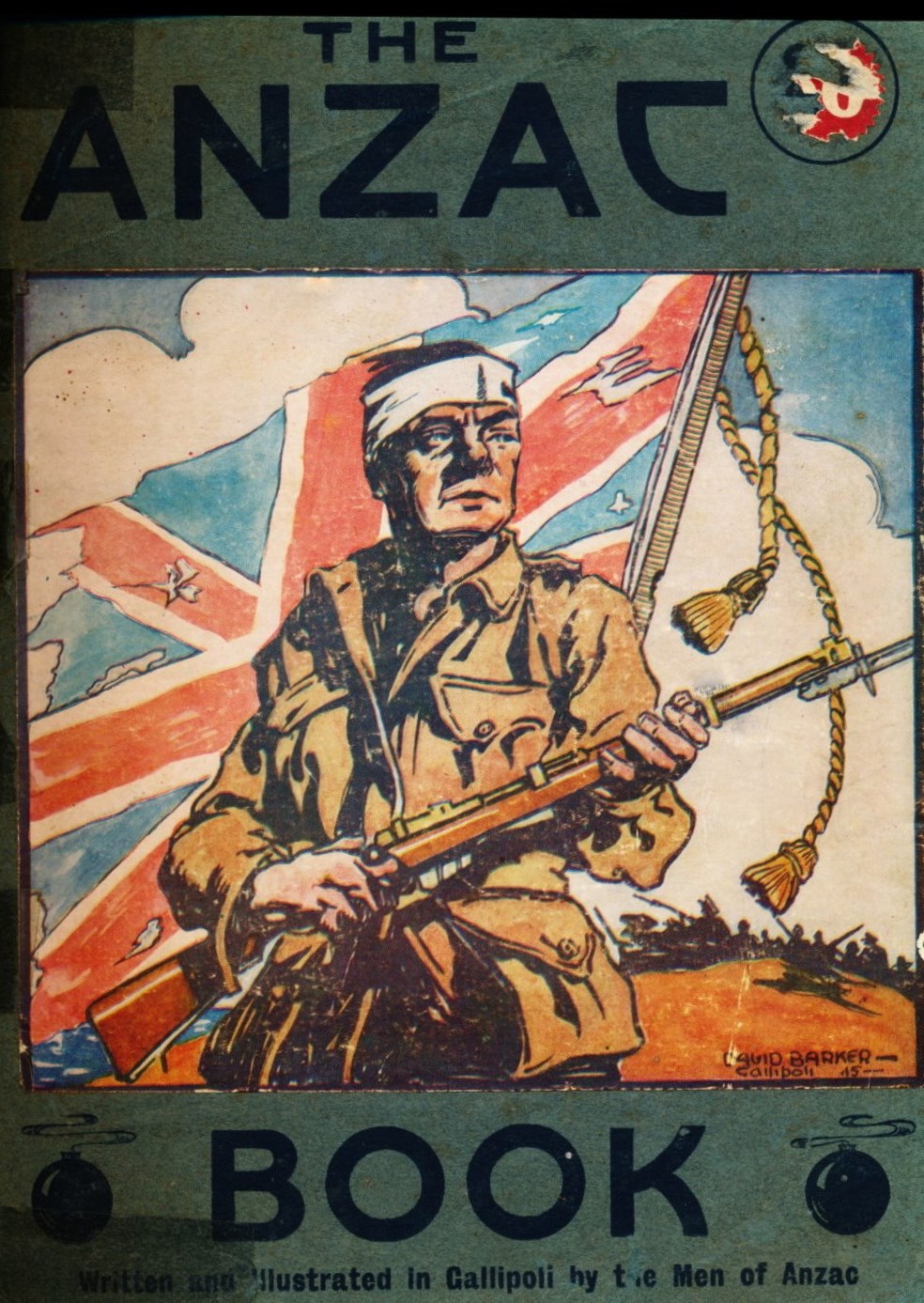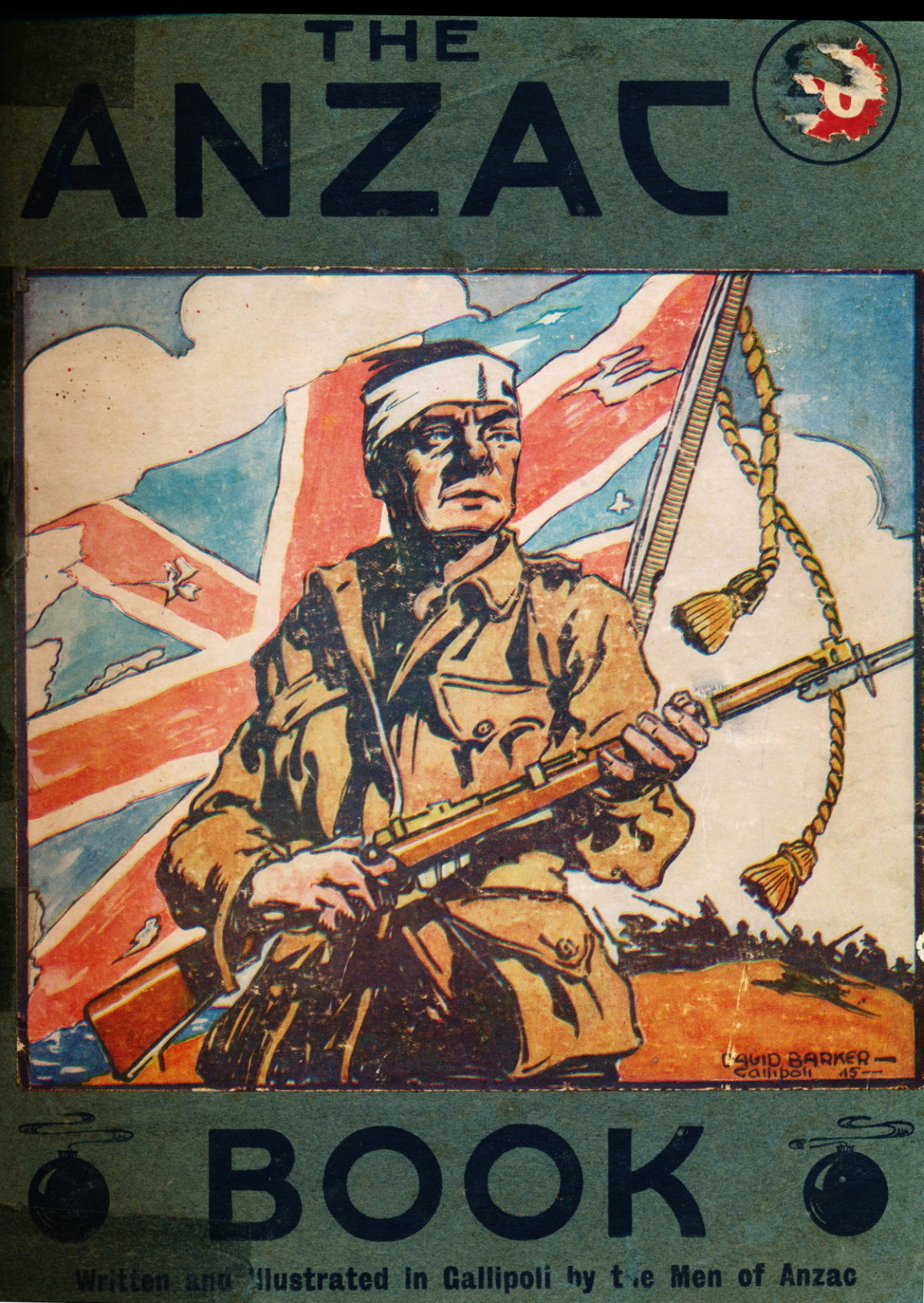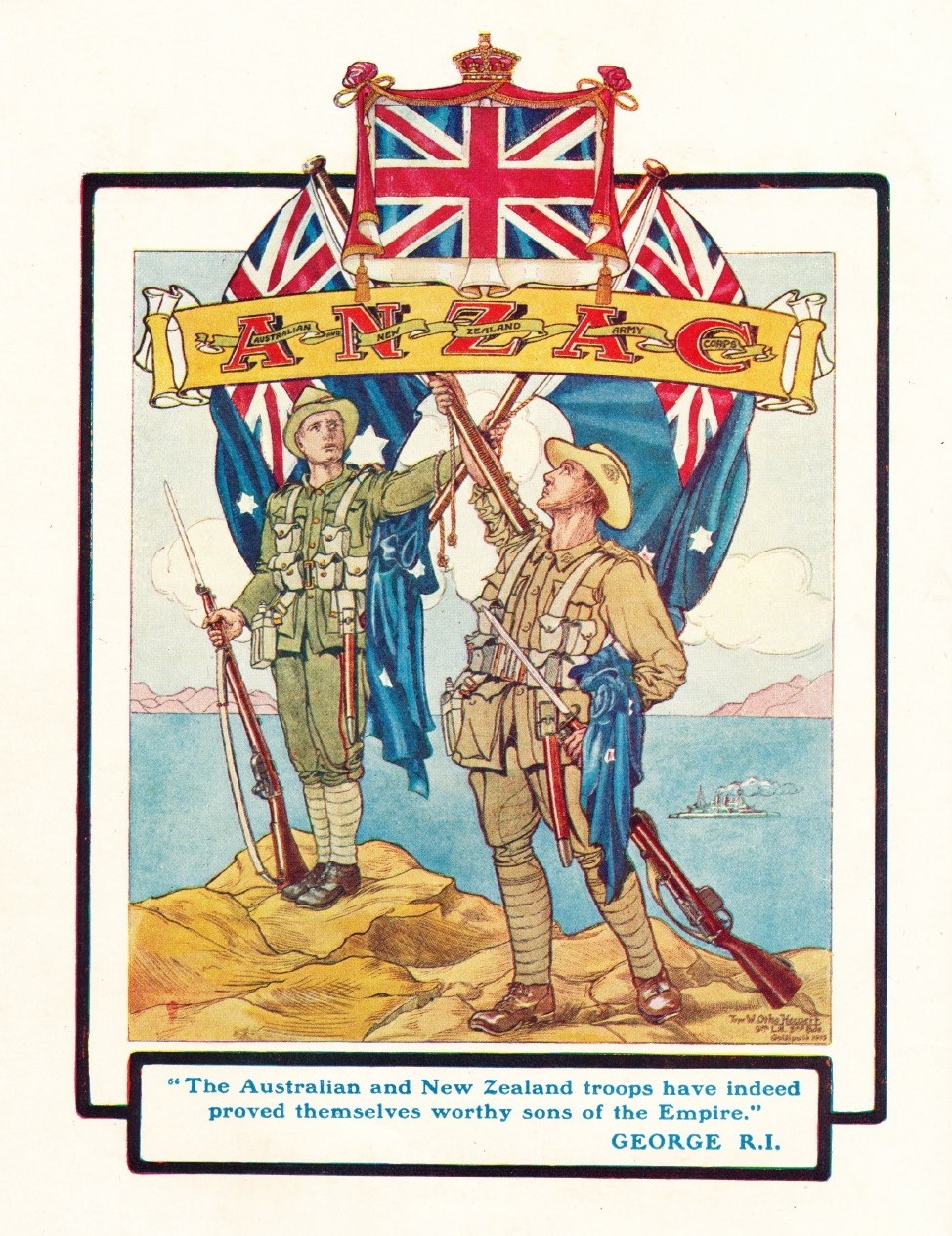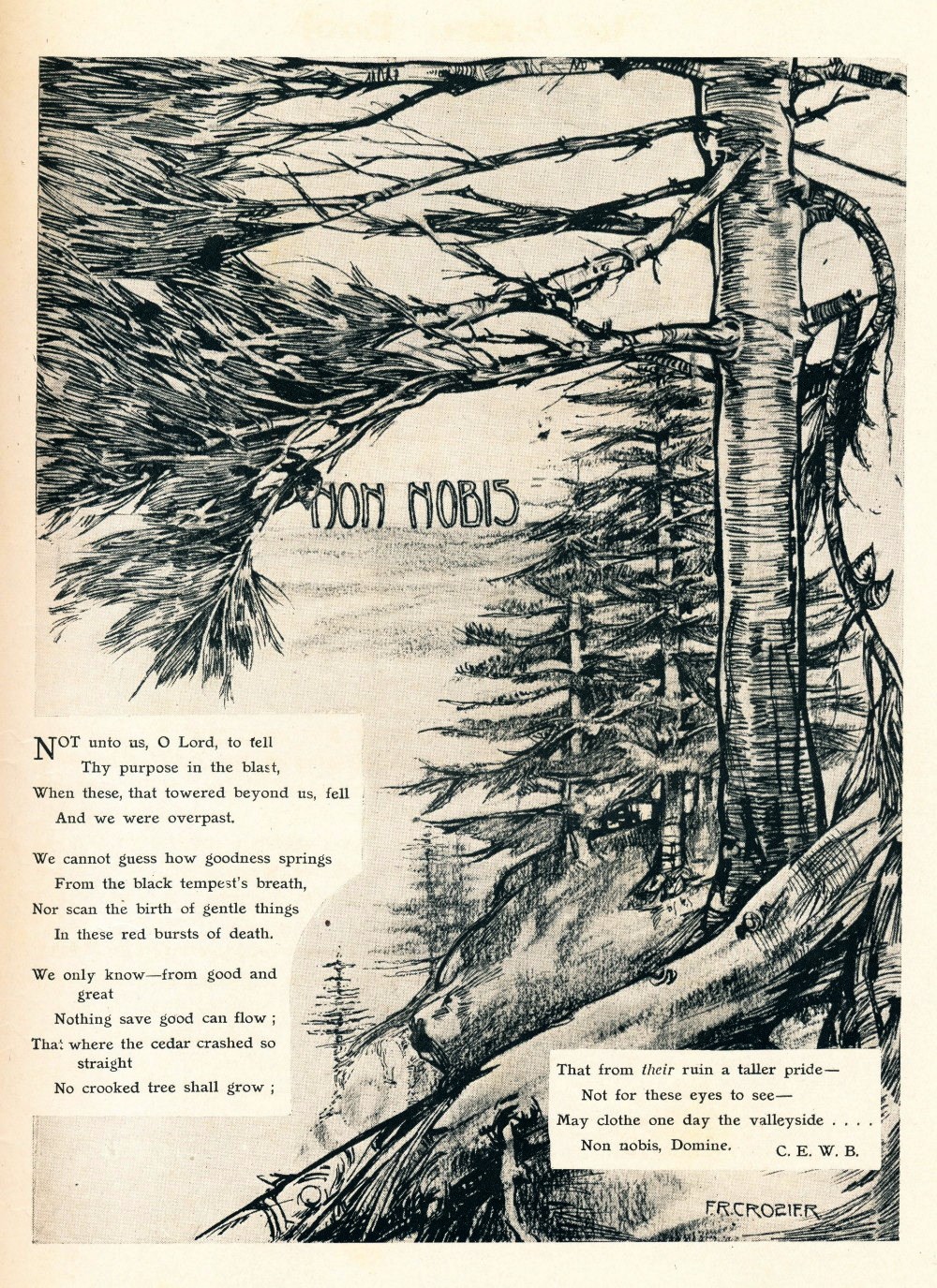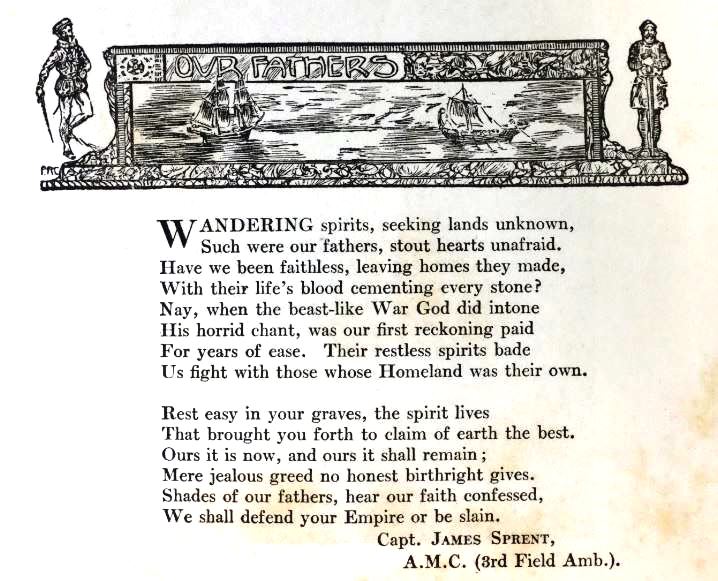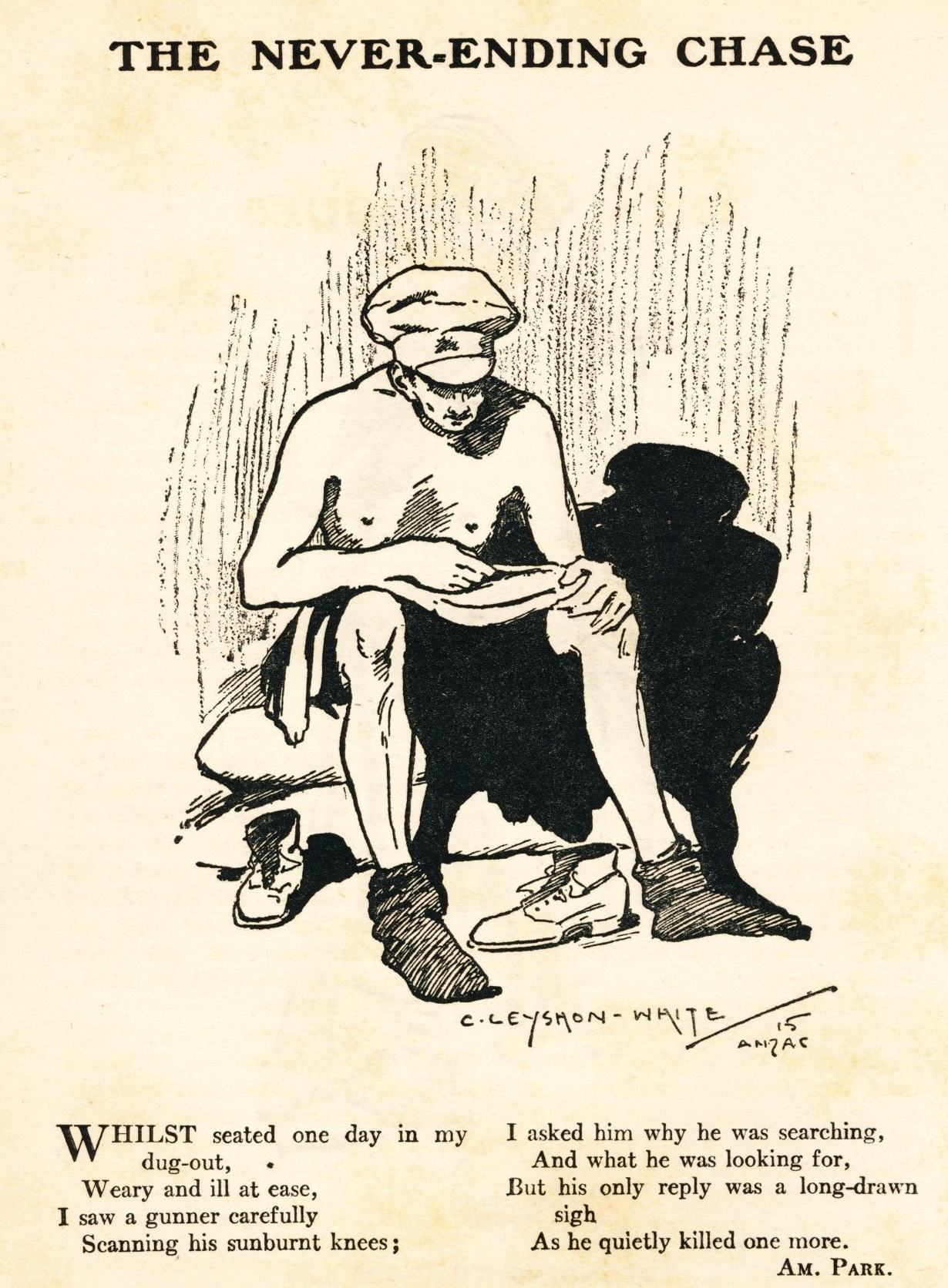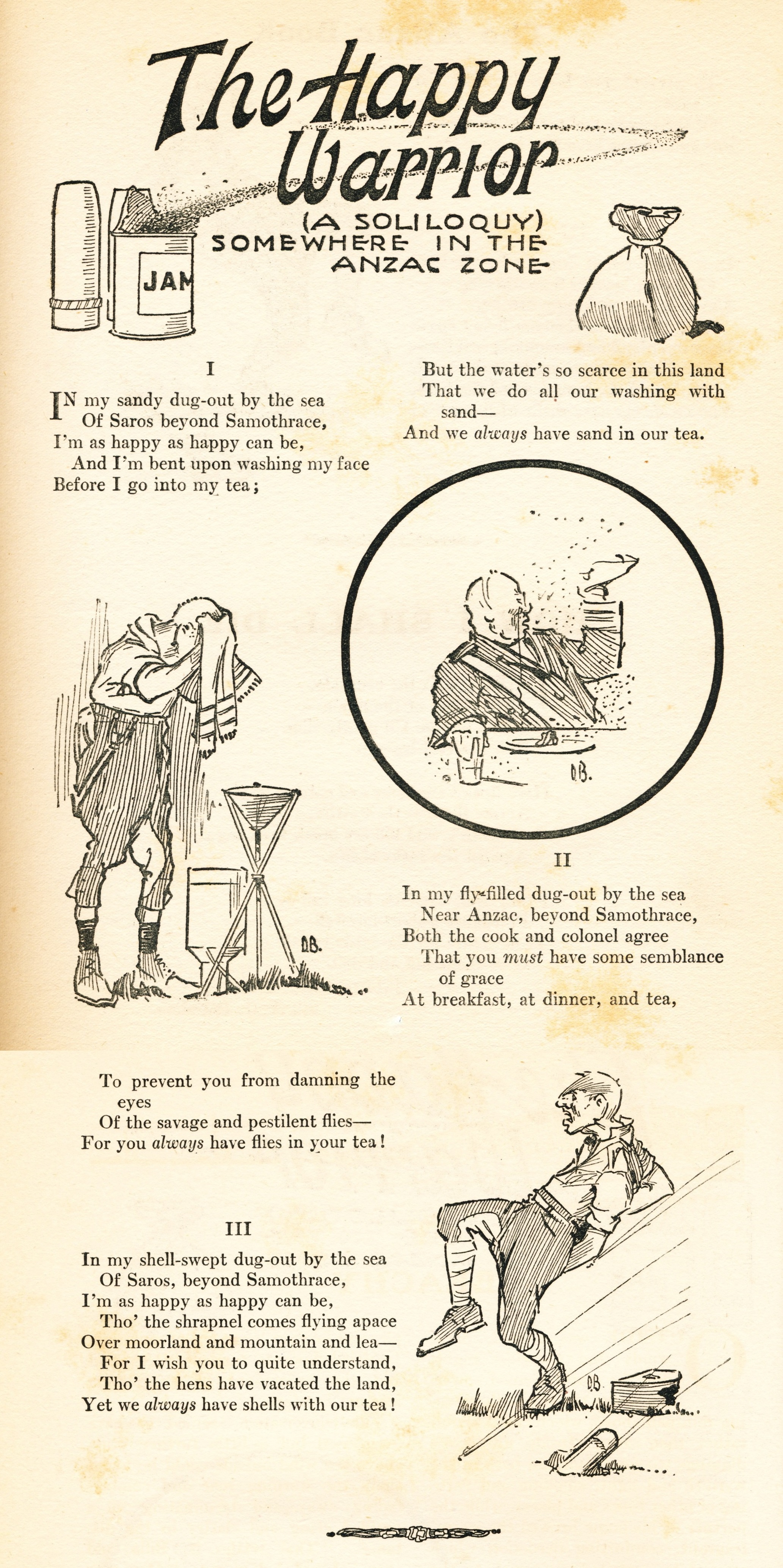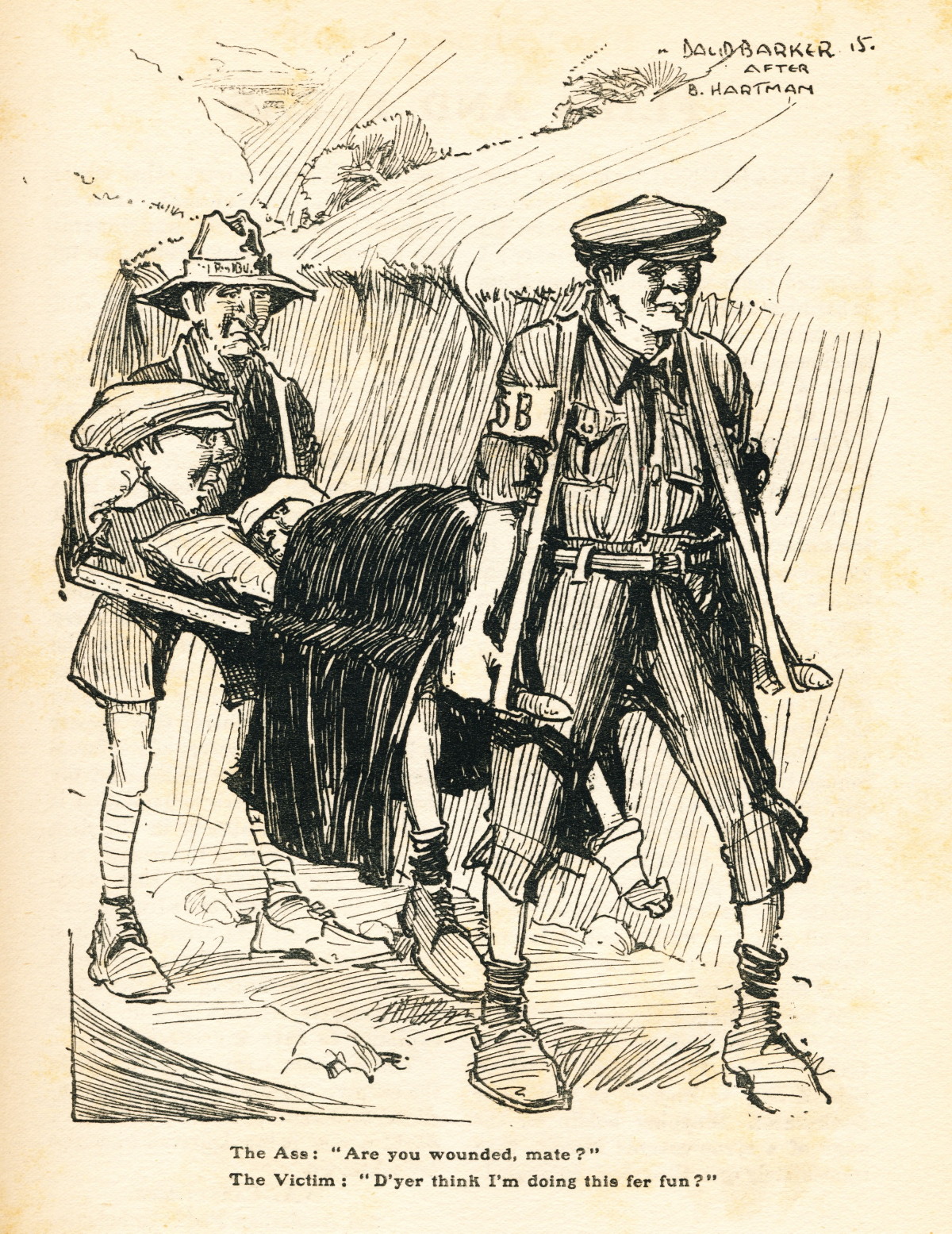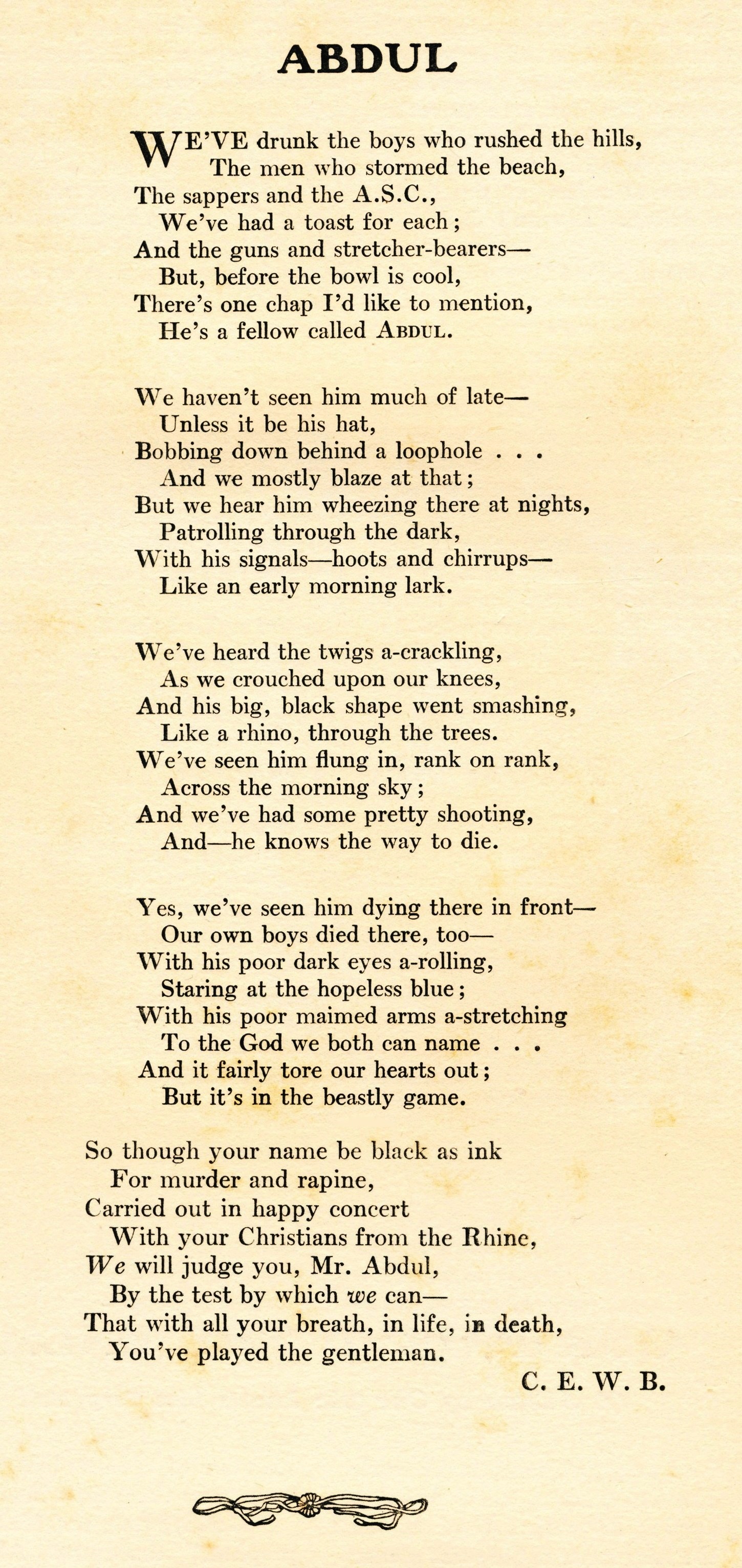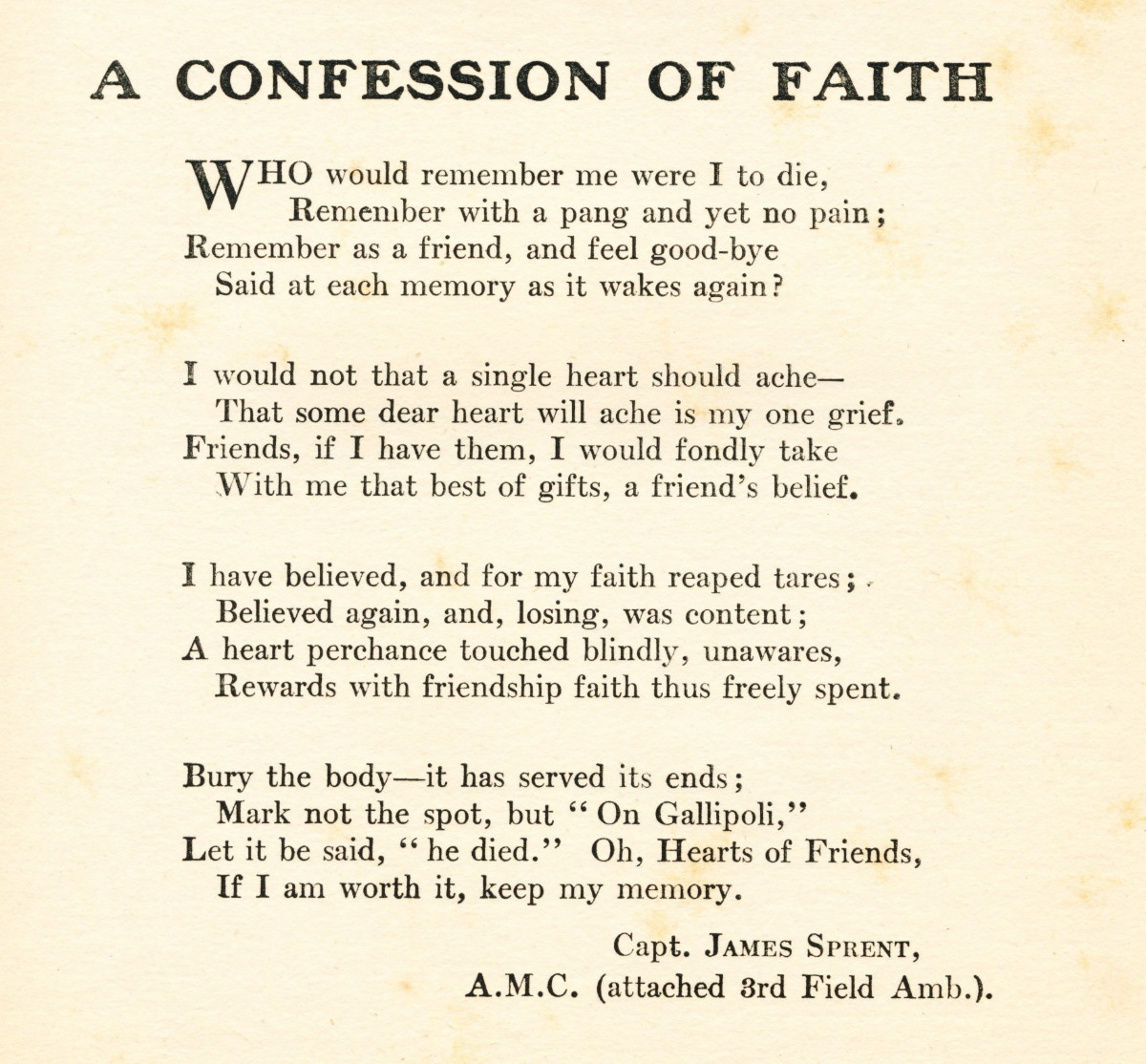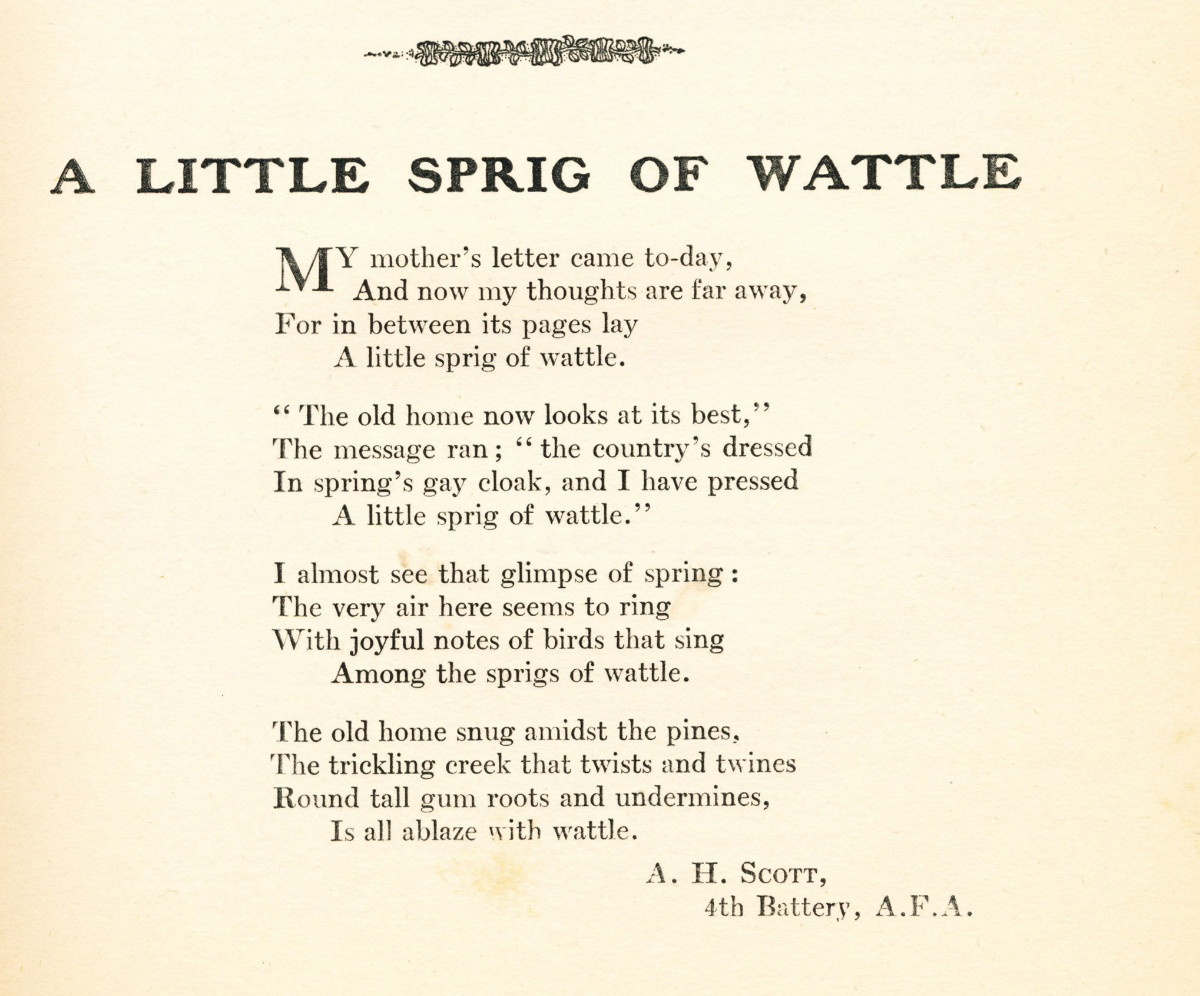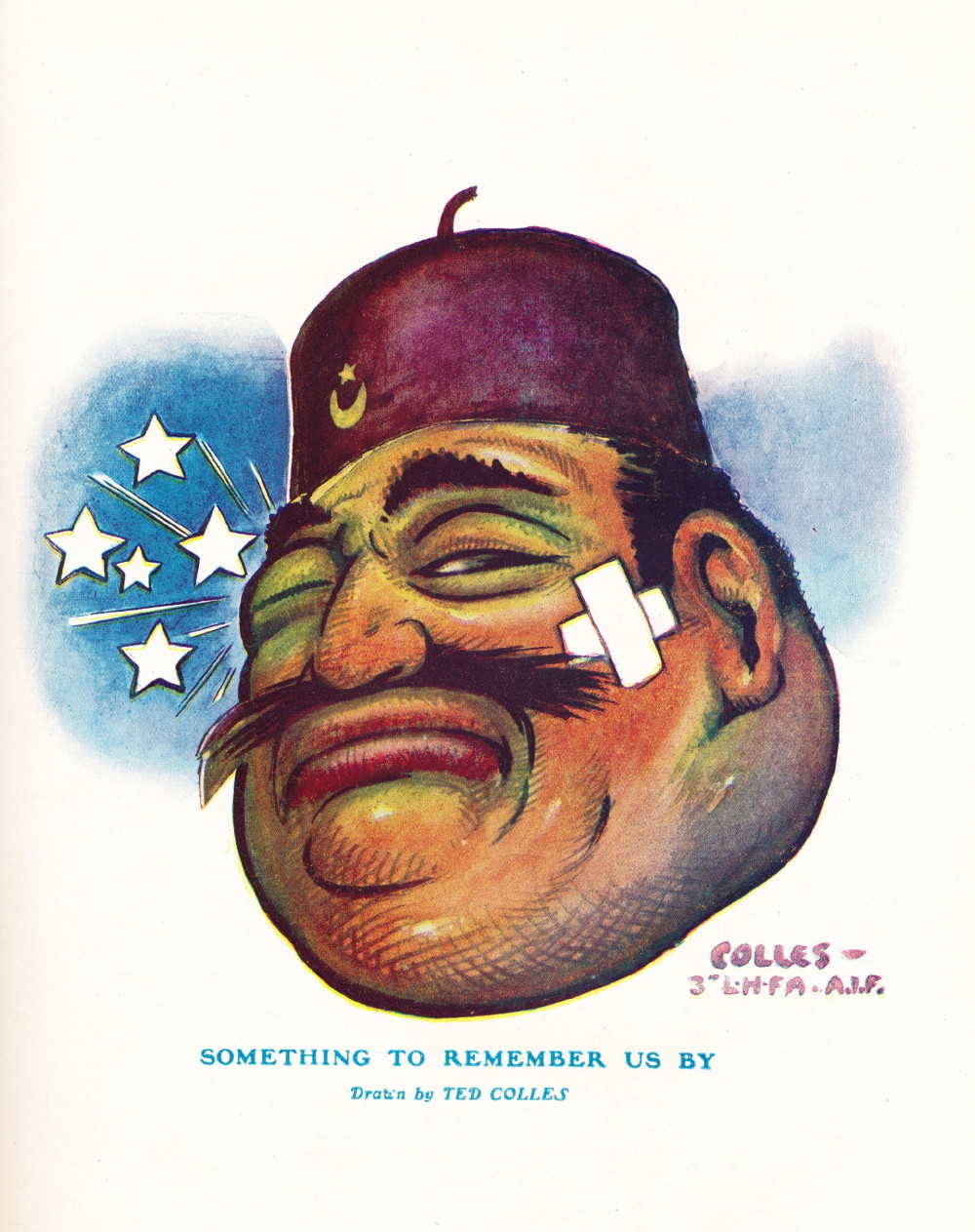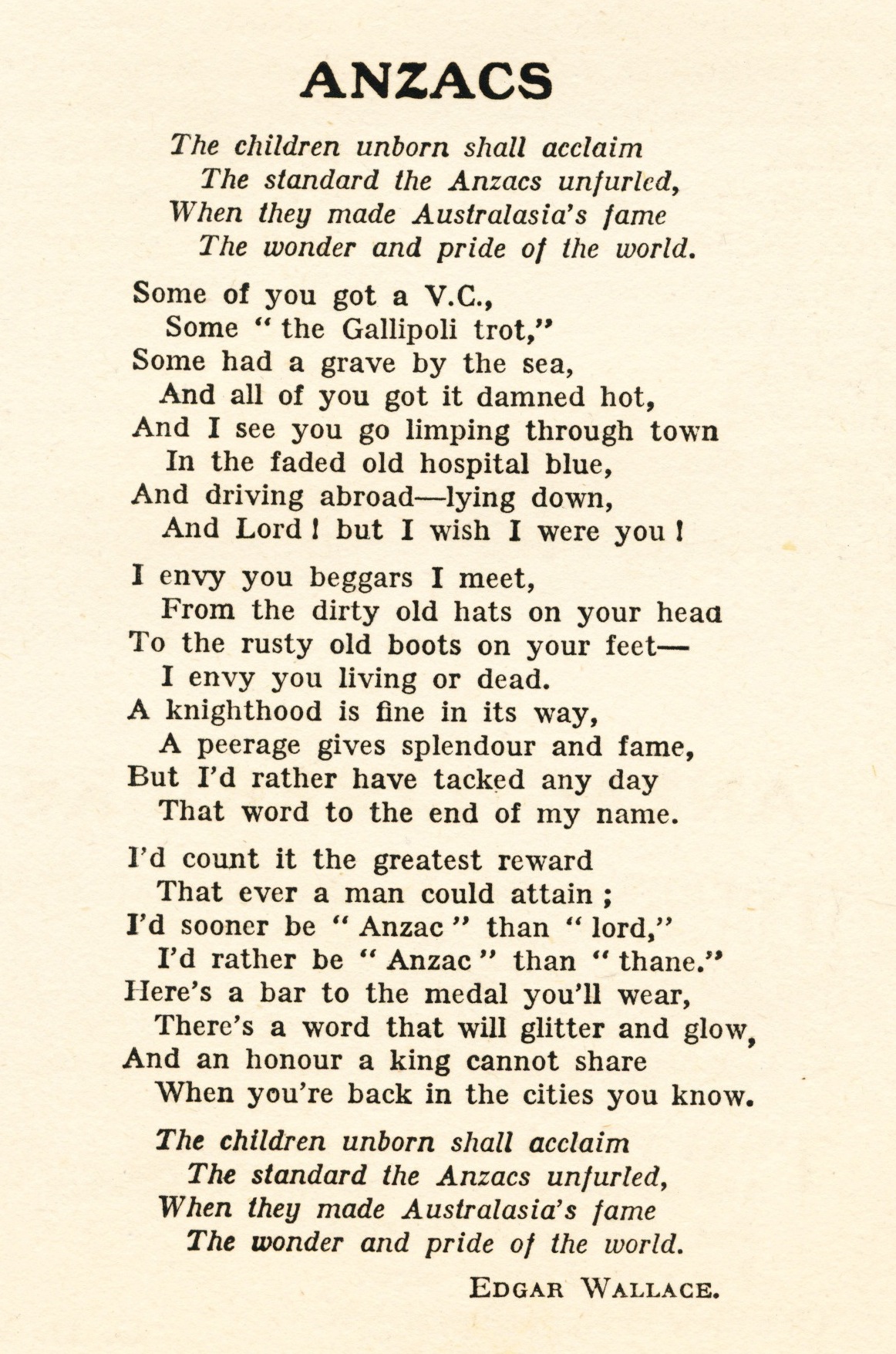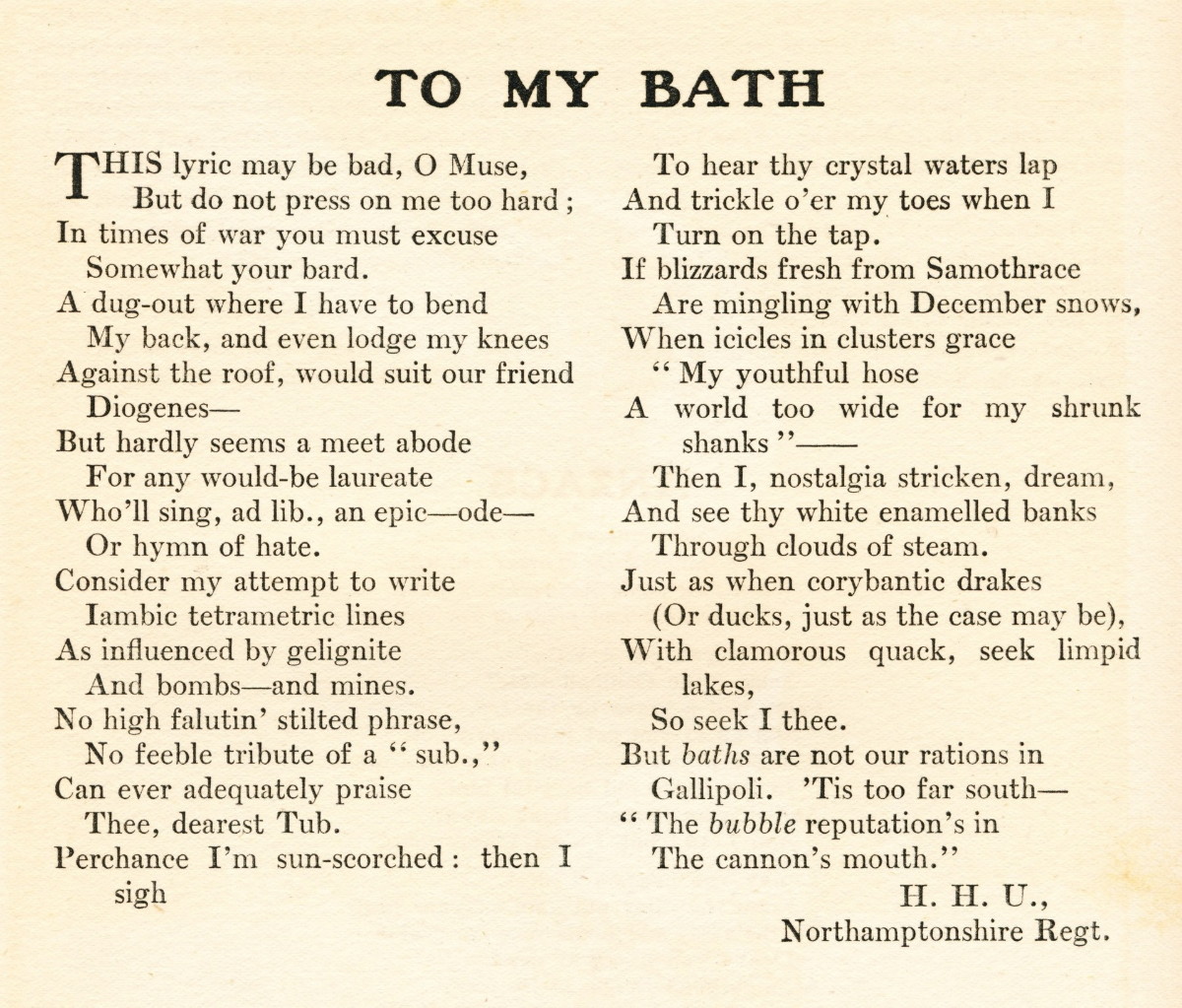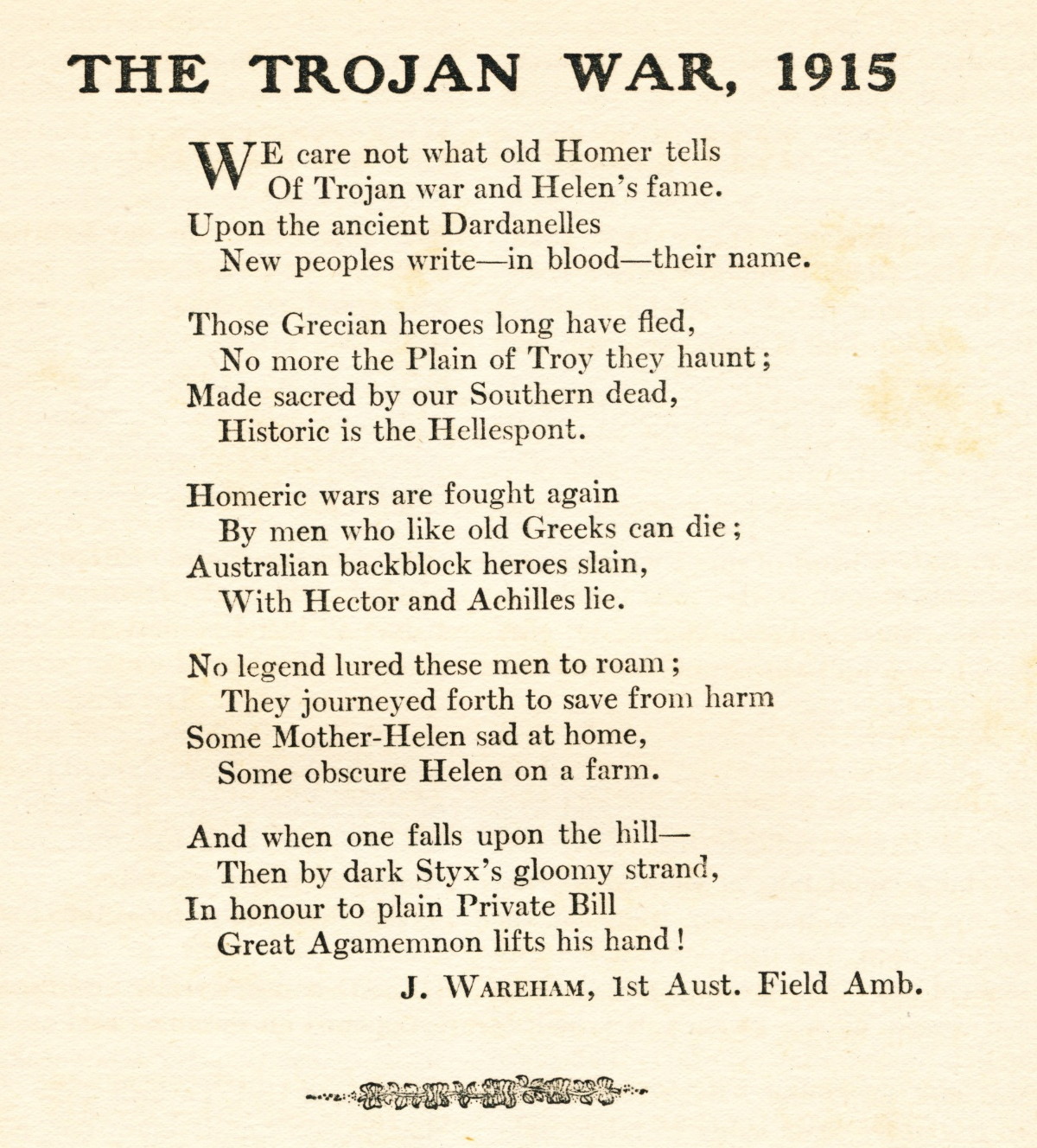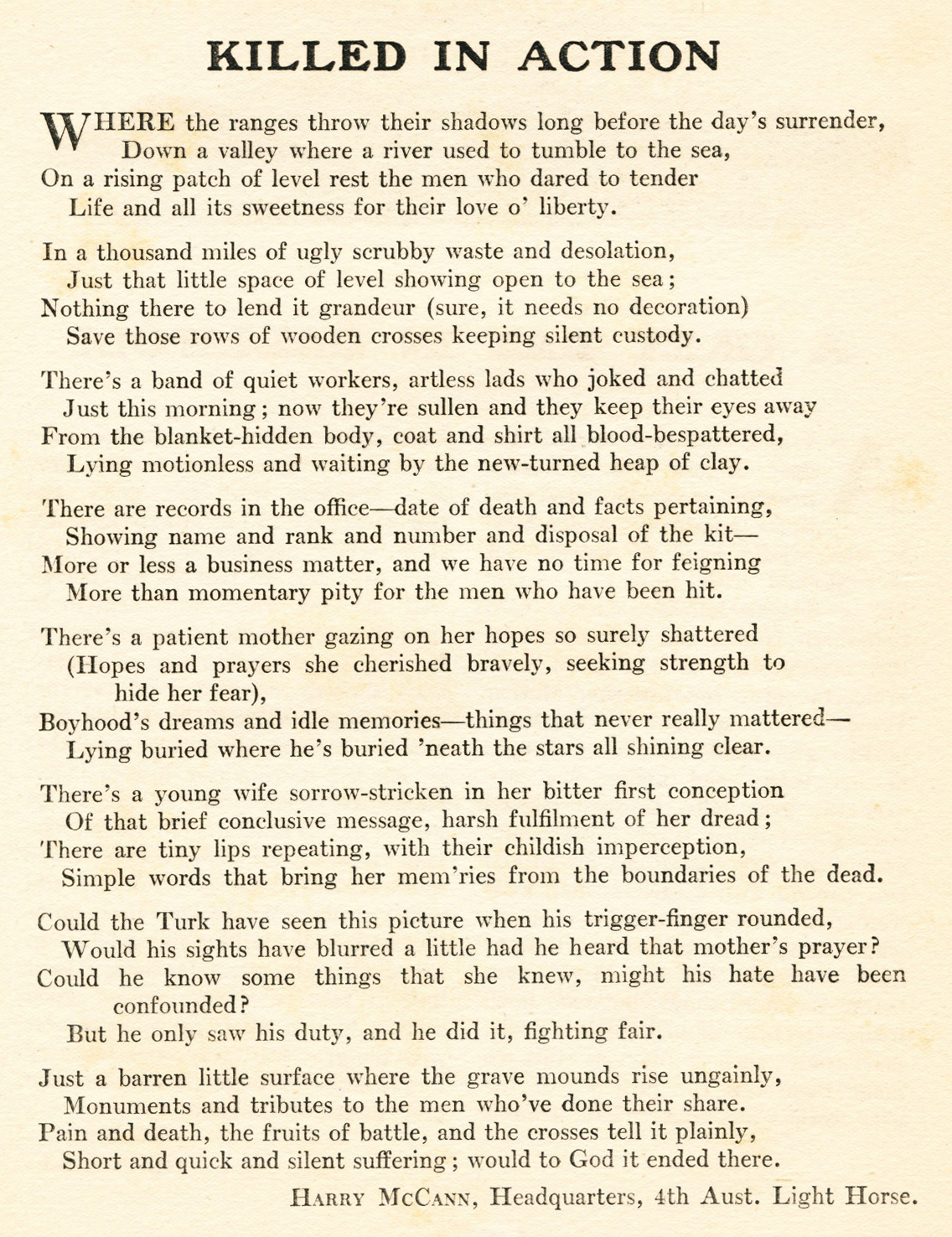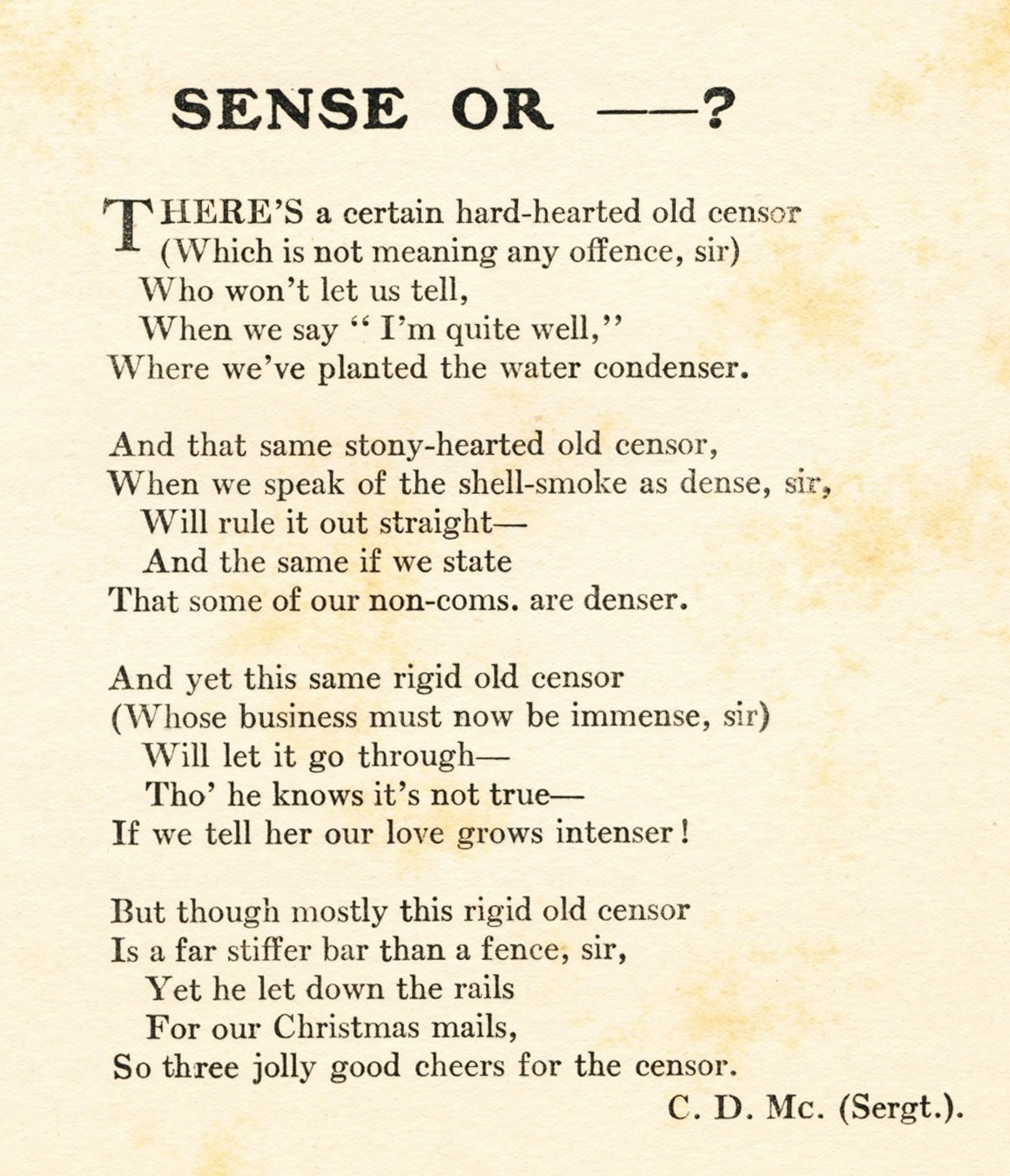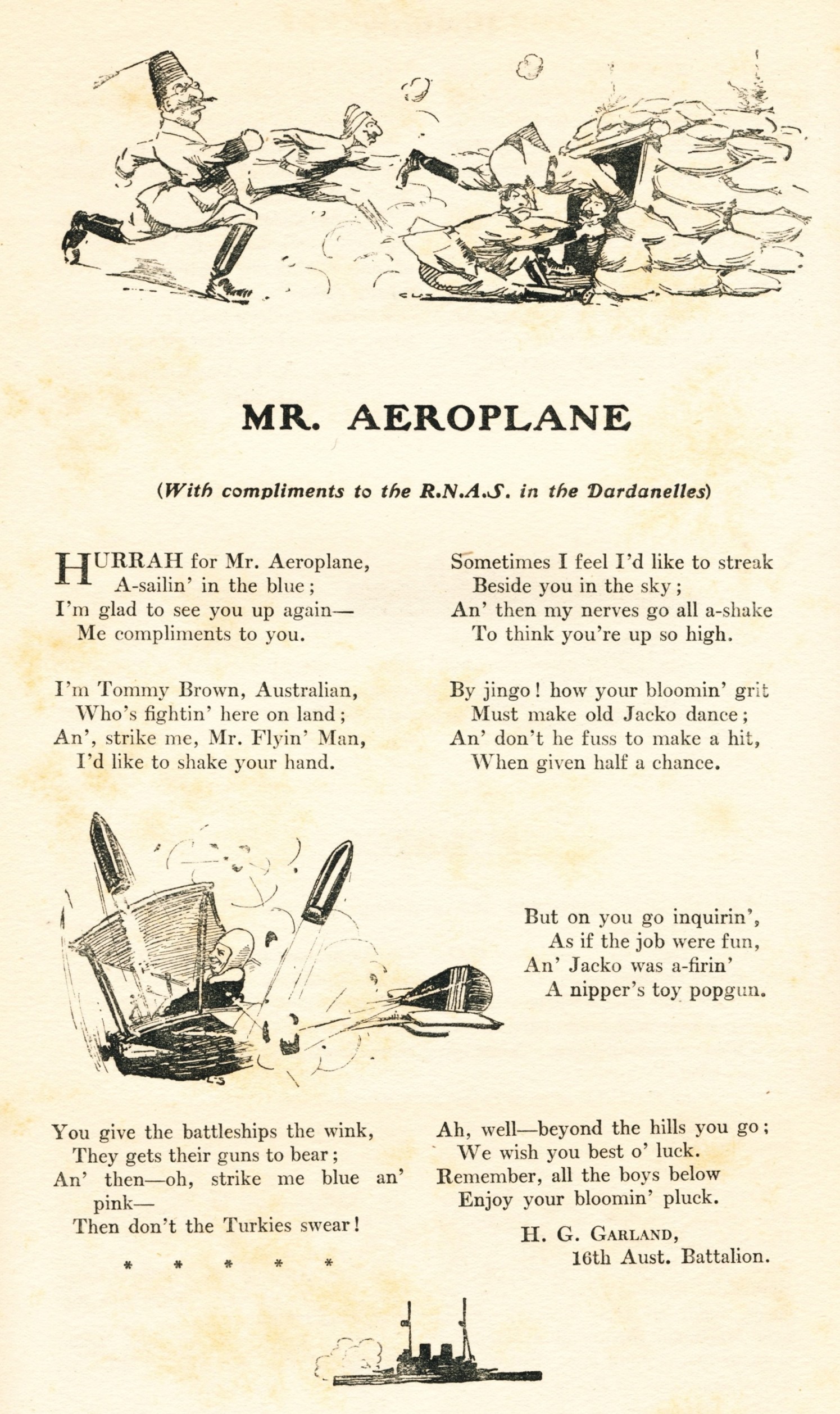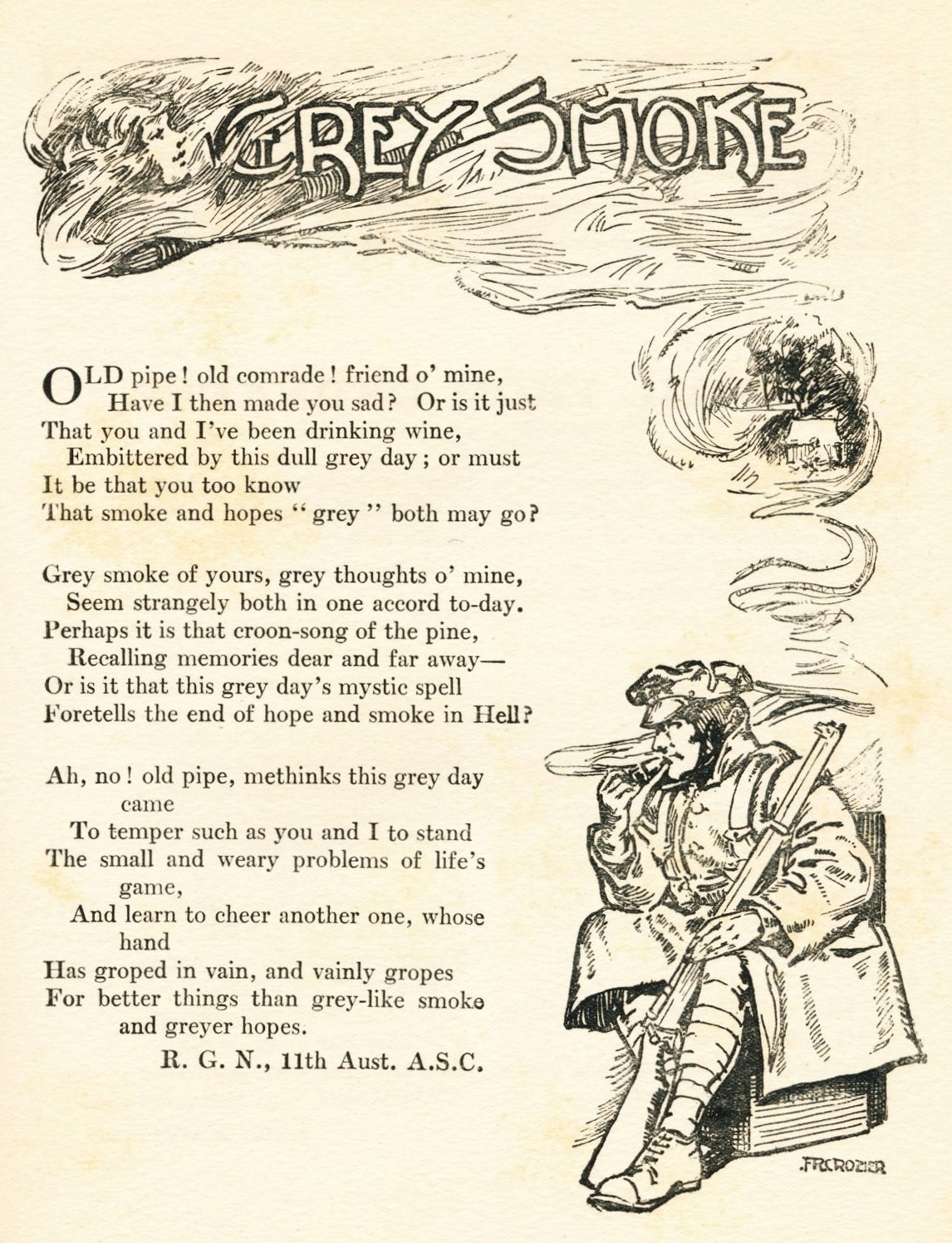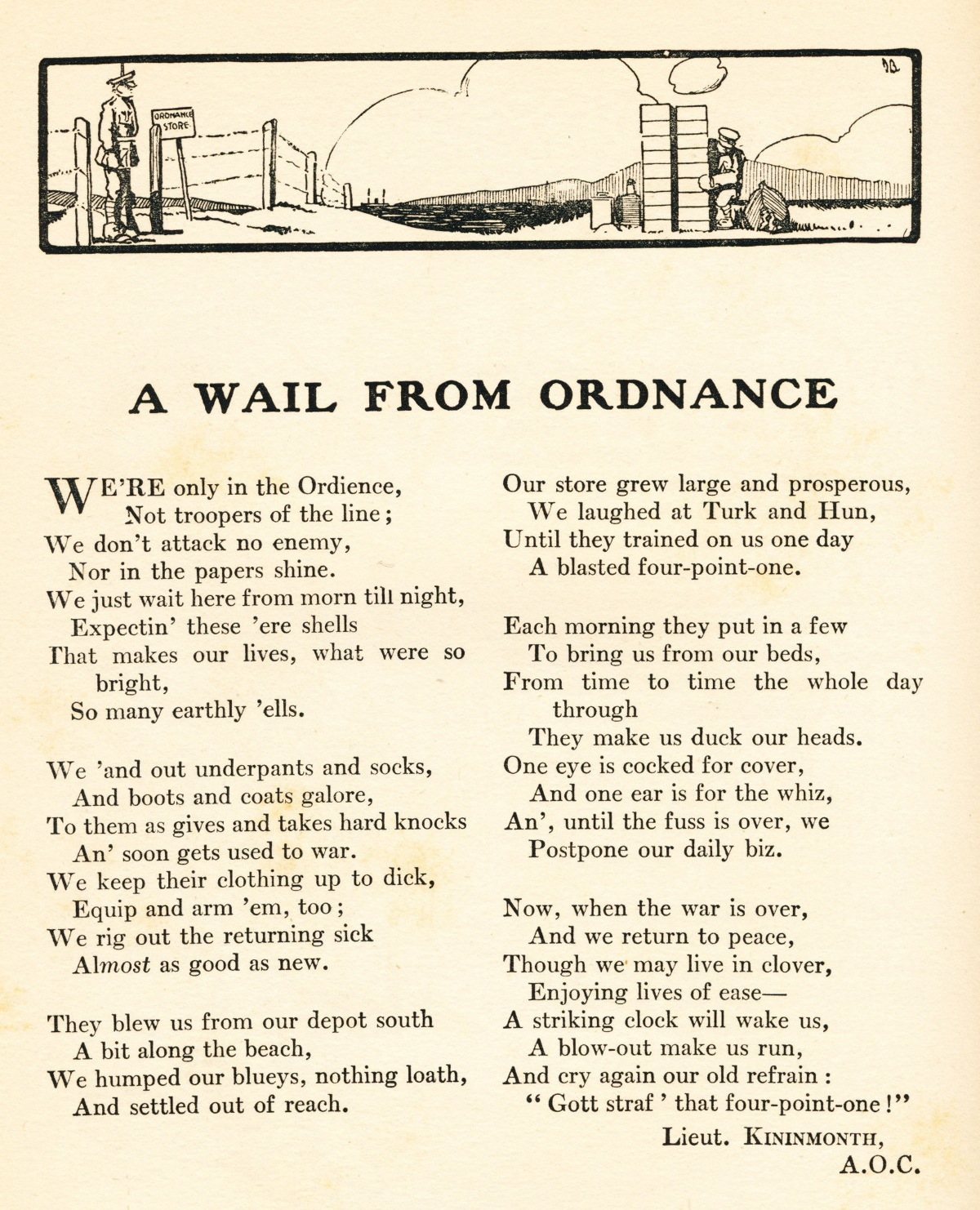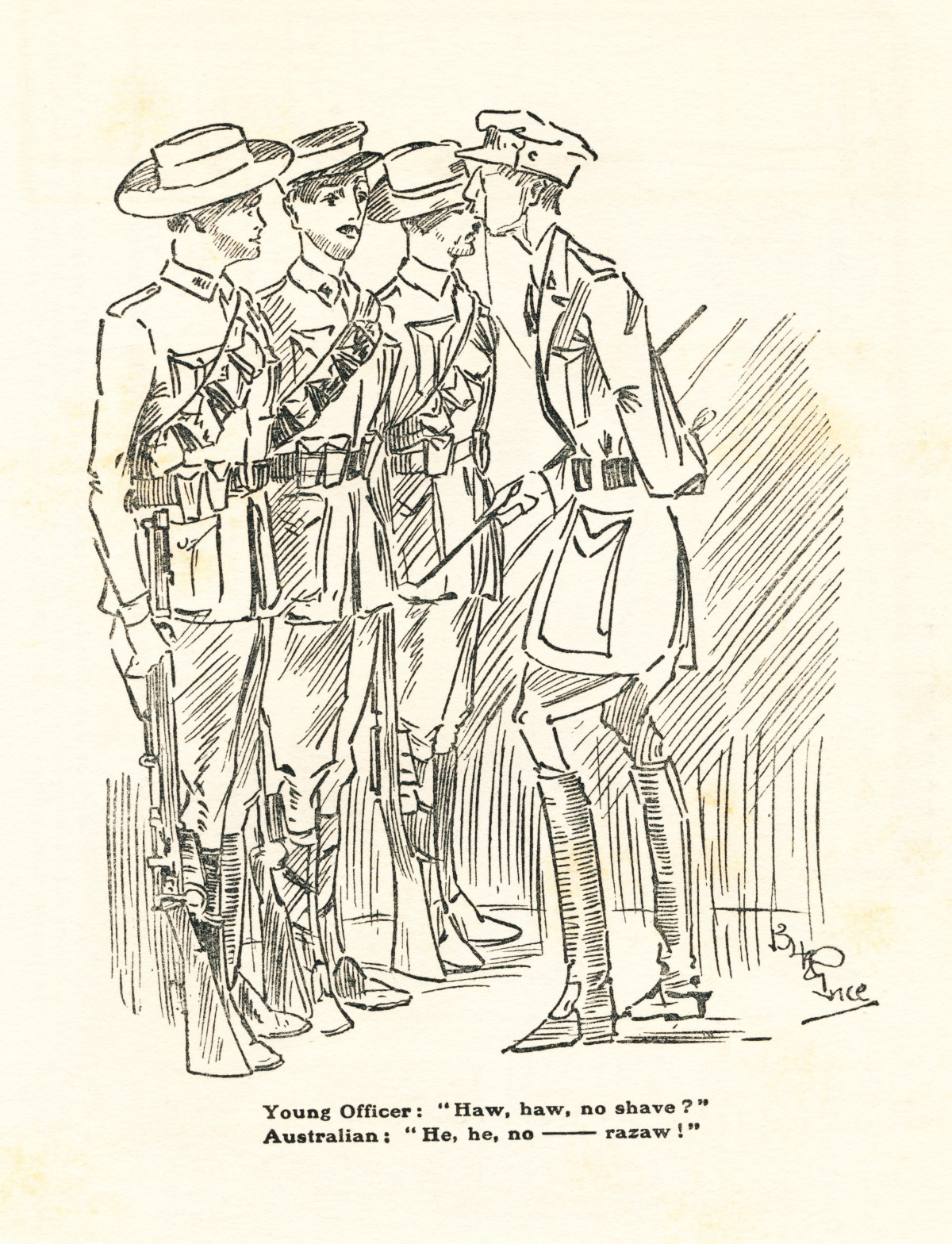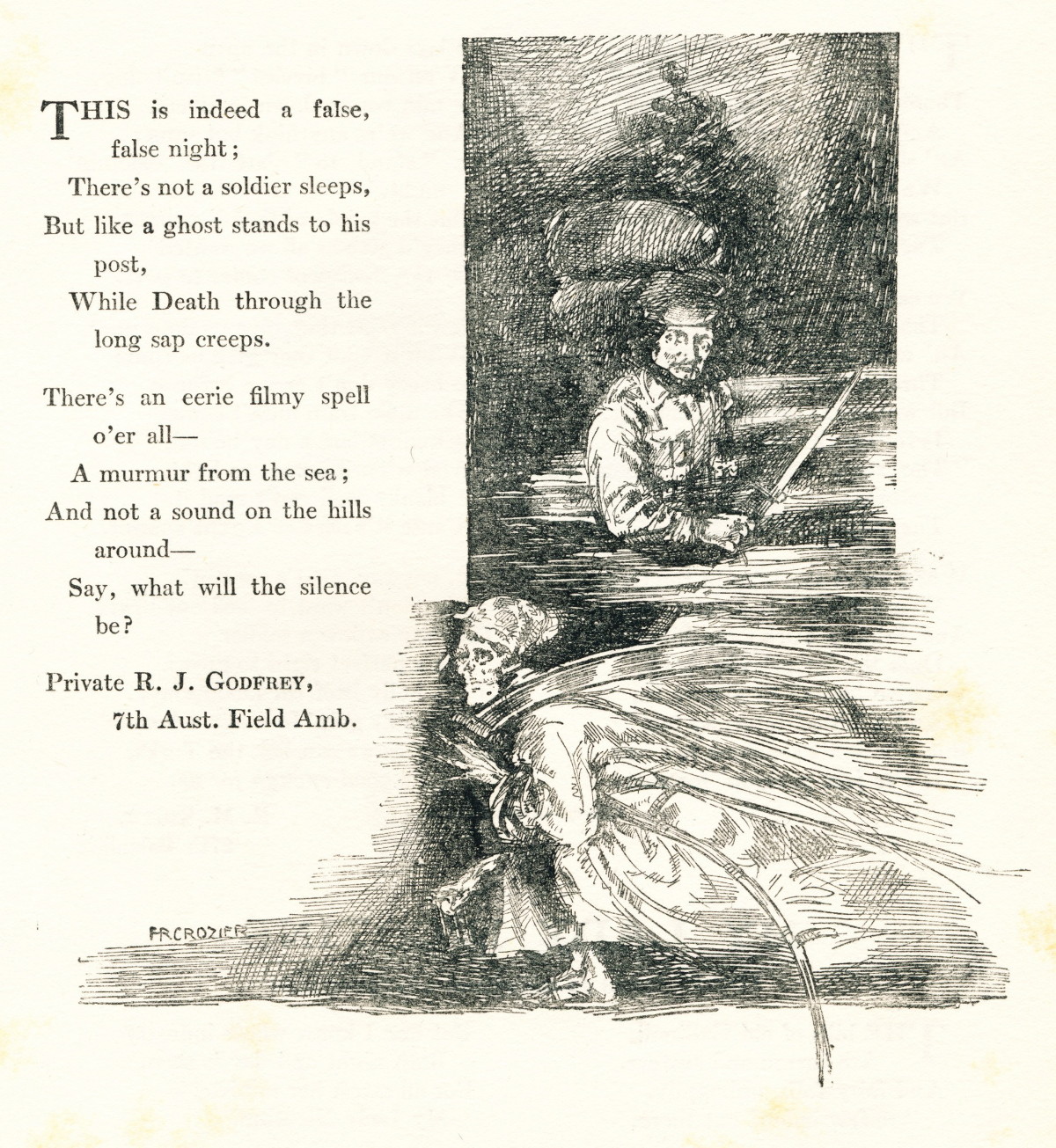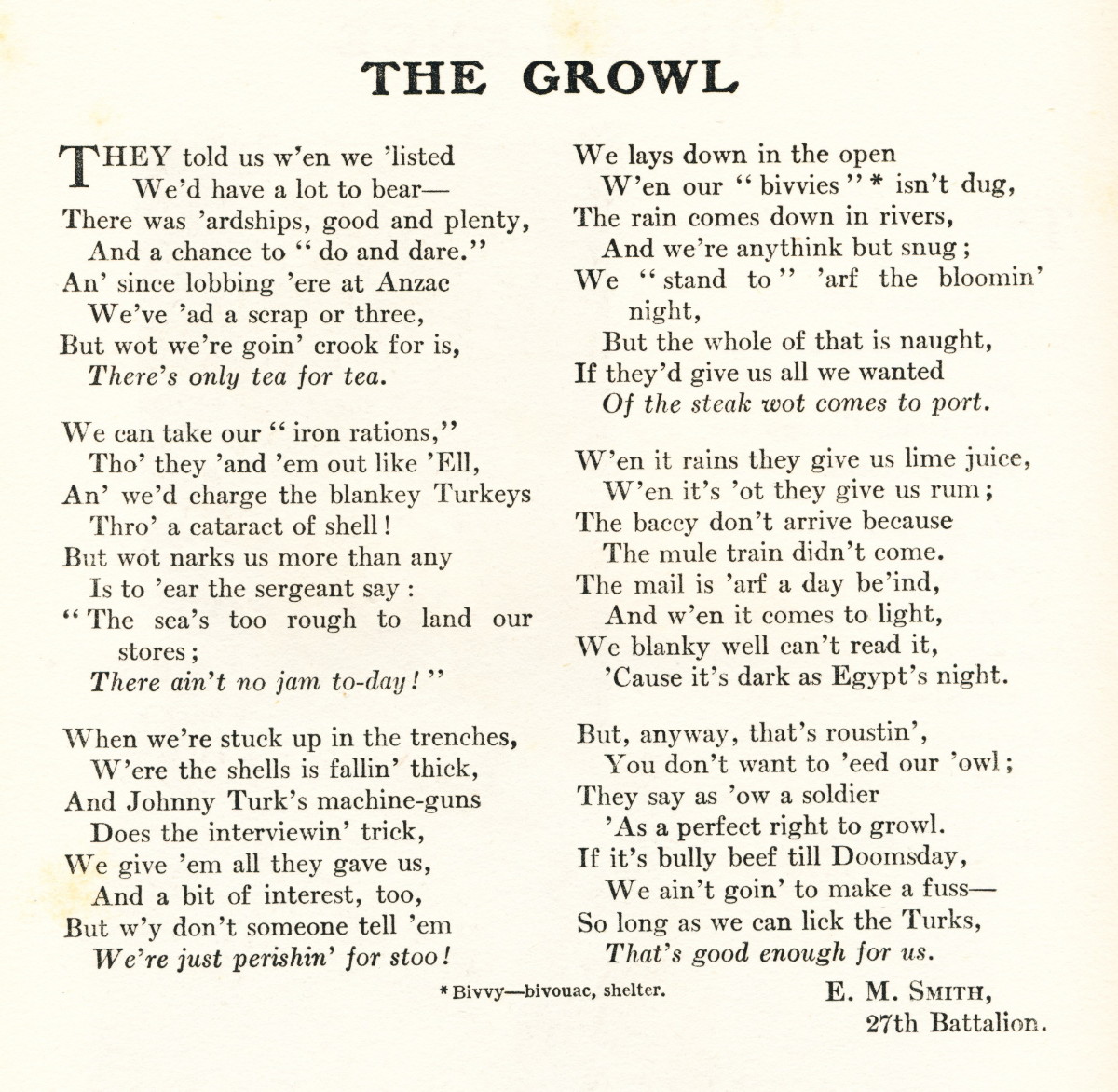AustLit
-
The Anzac Book was originally conceived of as an end of year souvenir which was to be written by members of the Australian and New Zealand forces at Gallipoli. It was also intended as a diversion to lift morale, with prizes on offer for the best contributions. As events unfolded, with the Allied withdrawal from Gallipoli in December 1915, The Anzac Book became a more substantial and more polished production than originally envisaged. In the end a significant portion of the book was given over to General Sir Ian Hamilton’s despatches, complete with official photographs and maps, which in effect amounted to an official account of the Gallipoli campaign. The Anzac Book was completed at Imbros, in late December 1915, and then printed in London in early 1916. The first impression ran to 100,000 copies, which quickly sold out.
The Anzac Book was significant in that it was one of a number of works which appeared in the aftermath of the Gallipoli campaign that sought to establish a narrative of the campaign. As such, it was part of a larger body of literature which helped create the Anzac legend. The Anzac Book was also significant in that it helped promote a way of writing about the war which was to become widespread among Australian and New Zealand soldier authors during World War I - a literary genre built on euphemism and dry humour, in which the horror of war was rarely mentioned directly, but was only alluded to, and where the difficulties and hardships of war were not dwelt on, but were instead turned into subjects of humour.
Many of The Anzac Book contributors wrote under a ‘nom de plume’ or submitted works under their initials, which means that for the most part their identities remain either unknown or are a matter of speculation. Of the contributors whose identities can be established, the majority were Australians, with a lesser number of New Zealanders, and a few Brits. In general, The Anzac Book contributors appear to have been literary unknowns, although many clearly had a grounding in literature and the classics. The Anzac Book artists had worked as illustrators and cartoonists prior to the war, though none were particularly well known.
Anzac Book contributors:
- Vernon Hopkins - a New South Wales lacrosse representative and first grade cricketer. He died of wounds at Ypres, in September 1917 ;
- James Sprent - after the war became a well known Hobart medical practitioner;
- Ormond Burton - a New Zealander who had a distinguished record in World War I. After Gallipoli he went on to serve in France, where he was awarded the Military Medal and the French Medaille d’Honneur. In the post-war years, he became a well known pacifist, and during World War II, was gaoled by New Zealand authorities for subversion;
- Alexander Pemberton - the twin brother of English World War I poet Vivian Pemberton;
- Hector Dinning - later became a well known Brisbane Telegraph journalist;
- Hugh Garland - before the war had been a journalist at the Adelaide Register. He was killed near Villers Bretonneux in May 1918;
- A.H. Scott - before the war had been a well known Sydney athlete and was winner of the New South Wales high-jump championships in 1913. He was killed in Belgium in October 1917.
-
The following display is a sample. To view a complete list of works that appeared in The Anzac Book click here.
-
-
You might be interested in...

